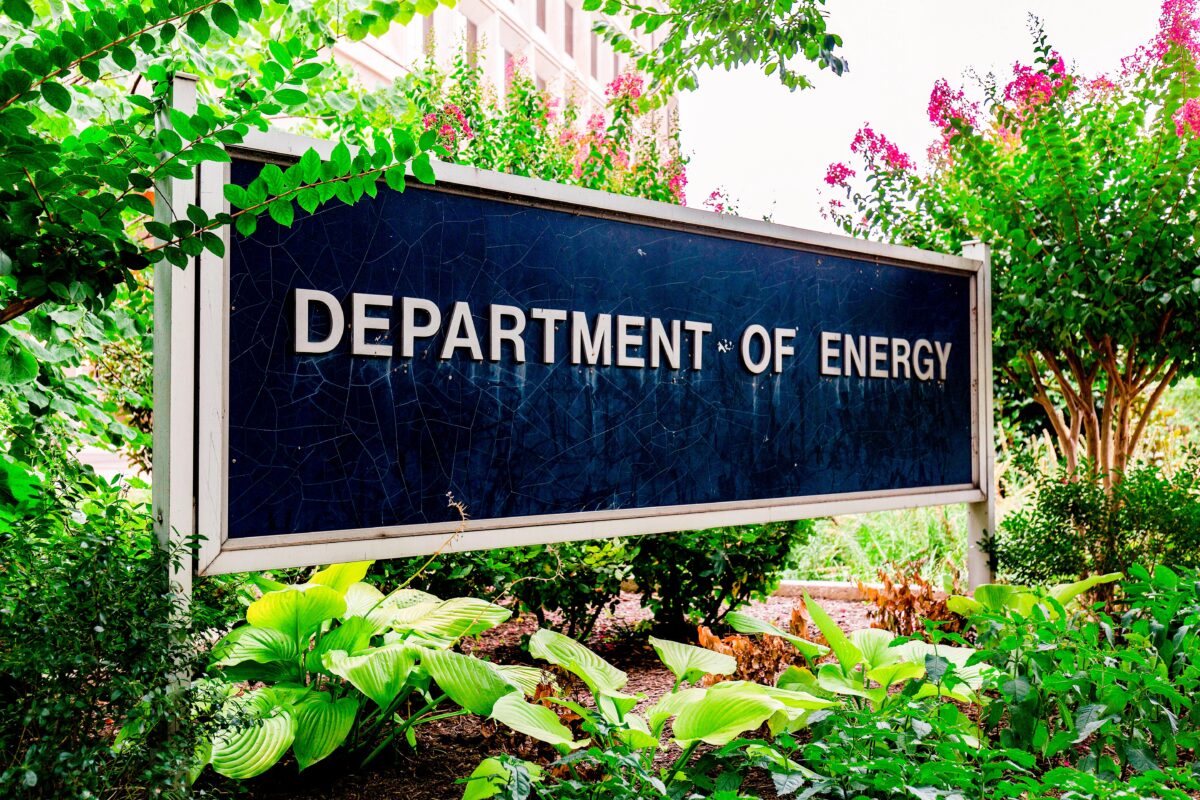


The Council of the District of Columbia is considering a proposal to rid the nation’s capital of all fossil fuel-burning appliances and systems, including gas stoves.
Ward 6 Council Member Charles Allen introduced the Healthy Homes Residential Electrification Amendment Act of 2023 in February. The bill includes amended laws for energy and construction in the district, and in its current iteration aims to retrofit all of the district’s gas stoves and systems by 2045.
“For households earning less than $80,000, it could be done with no out-of-pocket costs, including purchase and installation,” Allen’s office said in a statement at the time. The legislation is relying on federal money from both the Inflation Reduction Act and the Bipartisan Infrastructure Act, he said.
The D.C. Council held a hearing about the proposal on May 9.
The bill requires that the district’s Department of Energy and Environment (DOEE) complete the residential electrification retrofits of 5,000 homes by Dec. 31, 2025; 10,000 homes by Dec. 31, 2030; and 20,000 homes by Dec. 31, 2035.
Richard Jackson, interim director for DOEE, said the law would direct his department to “provide replacement of natural gas-combusting home appliances at no cost to at least 30,000 low-income households by 2040.”
Much of the money for free retrofits will come from the federal government.
The U.S. Department of Energy (DOE) home energy rebate programs authorized under the Inflation Reduction Act will give the district $59 million over 5 years to complete the project, Jackson said.
Jackson said there is a lot that is still unknown about when the DOE will release funding for these electrification projects.
Garret Whitescarver, the D.C. Department of Buildings (DOB) chief building officer, warned the council that his department’s infrastructure cannot currently handle the permit load for retrofitting gas stoves and heating systems, making it impossible to meet the targets for completion unless the bill is amended to bolster the agency.
Another concern about removing all gas stoves and systems was having enough contractors to do the thousands of retrofits.
During the hearing, the council heard from D.C. residents about the bill, and the majority of the dozens of witnesses who testified supported the bill.
“We strongly recommend that implementation of the bill include mechanisms for both homeowners and renters to benefit, including potential funding for nonprofit affordable housing providers,” said Sarah Goodwin, who represents Lincoln Westmoreland Housing, a nonprofit affordable housing developer with close to 200 units in the district.
Allen and the majority of witnesses said they believe removing gas from homes is important because gas appliances contribute to high carbon emissions and respiratory diseases.
However, a 2013 study published in the National Library of Medicine looks at data from more than 500,000 children in 47 countries, and the researchers “detected no evidence of an association between the use of gas as a cooking fuel and either asthma symptoms or asthma diagnosis.”
The American Gas Association (AGA) said that reports such as a 2022 study in Australia that linked asthma to gas stoves are “unsound.”
“Attempts to generate consumer fears with baseless allegations to justify the banning of natural gas is a misguided agenda that will not improve the environment or the health of consumers and would saddle vulnerable populations with significant costs,” the American Gas Association said in a January press statement.
The U.S. Department of Energy issued a proposed rule on Feb. 1 that would set maximum annual energy consumption standards for newly manufactured electric and gas cooking tops. The agency said although manufacturers of the stoves will incur costs, the long-term benefits would be worth the sacrifice.
“It is estimated that the industry would incur total conversion costs of $183.4 million,” the proposed rule states. The DOE acknowledged higher costs for consumers, who can expect to pay more than $32 million annually in increased costs.
The gas stove bill is a part of D.C.’s larger plan to reduce carbon emissions and to be carbon neutral in the next two decades.
The fossil fuel energy used in homes and buildings is the largest contributor to the district’s greenhouse gas emissions, representing 72 percent in 2020, Jackson said.
The Heritage Foundation did its own calculations using the federal climate simulator model and found that the federal government’s proposal to increase efficiency standards for consumer stoves and reduce carbon dioxide emissions by 19.6 million metric tons would result in a global temperature mitigation of only 0.0009 degrees Celsius over the next 100 years.
In addition, AGA argues that new innovations have made natural gas a cleaner source of energy in recent years and that natural gas utilities have reduced their greenhouse gas emissions by 69 percent since 1990.
But the D.C. Council disagrees with AGA and is following the guidance of studies like the recent Stanford University study, which found that natural gas stoves may emit high levels of indoor air pollution and likely play a role in climate change.
The D.C. City Council will wait until the DOE’s final guidance on phasing out the city’s gas appliances and systems.
“We certainly will get that federal guidance that comes in the summer, that’s going to help us inform what the final legislative package looks like,” said Allen.

